Throughout the year, our Powerful Learning Team members collaboratively examine their own educational practice systematically and carefully through a process called Action research.
Action research is:
- Disciplined inquiry into a problem or possibility within the school or classroom
- Collaborative and usually takes place in a community of practice
- Meaningful, positive, and reflective
- Data-driven, action-based, improvement-focused
- Transformative
Here are a few of the latest Action Research projects from schools who have participated in the Powerful Learning Practice experience. See all Action Research.
Action Research Projects
Action research is a process in which Powerful Learning Team members collaboratively examine their own educational practice systematically and carefully. Action research is:
- Disciplined inquiry into a problem or possibility within the school or classroom
- Collaborative and usually takes place in a community of practice
- Meaningful, positive, and reflective
- Data-driven, action-based, improvement-focused
- Transformative
Here are a few Action Research projects from schools who have participated in the Powerful Learning Practice experience. Check this showcase often for new featured projects.
A community for boarding school educators
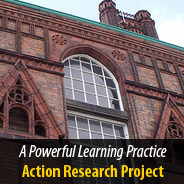
While each team member had individual ideas of projects in which they were interested, we decided to develop a professional learning network (PLN) as an online community for boarding school educators to share ideas and to discuss best practices. Members of our team reached out to residential life leaders (including Deans of Residential Life and Deans or Directors of Students) at nine regional boarding…
Continuing as a network of critical friends
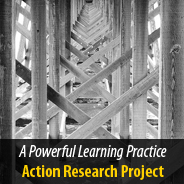
For the second year of our journey toward an increasingly technology rich curriculum, we are planning to use the Critical Friends model as a framework. We hope that this framework will provide us with a way to more deeply investigate our use of curricular technology.
Problem, Issue, or Possibility
Objectives and Assessment
Implementation…
Finding time for collaboration through technology
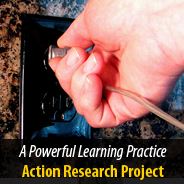
Ben Franklin School is in its second year of working toward a successful PLC. Teachers have time to collaborate as grade-level teams on a weekly basis, but this has not solved all of our communication problems. We still lack time for all staff to communicate and collaborate. As a PLP team we decided that using a social networking tool, such as a Ning, could be an appropriate…
Peace through technology
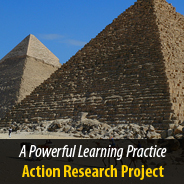
In an effort to make connections between curricular content and the real world we sought global partners to discuss contemporary issues. Our focus was how technology influences the solutions we create to problems. Students participated in a collaborative network called iEarn and spoke with students in Egypt just as their president was being asked to step down from power.
The conversations that ensued were relevant and connected to curricular objectives….
Thinking SMART about Digital Citizenship
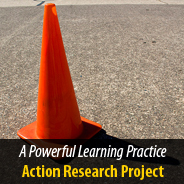
Forest Hills Elementary Schools
Team Members: Julie Thorp, Lisa Courtney, Marie Mehring, Linda Lagemann, Lauren Wiethorn, Annette Thomas,Ann Hambleton
Community: Dublin-Dallas Year 1, 2010-2011
As we enter the ever changing world of 21st century learning, we believe that it is essential for our students to have the tools necessary to be safe, effective, and respectful digital citizens. As a team we have researched and created a curriculum for grades 1-6 using the acronym, SMART:
Safety first
My creation or give credit
Awareness of…
The beginning of a great collaboration
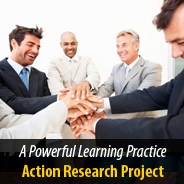
First we will design a wiki for staff collaboration that initiates conversations about learning and teaching. The next phase will take place over the summer. We will schedule informal “GREat Collaboration” meetings. Over the next year we will develop PLNs within our staff and work towards a broader connectedness for teachers/students using the tools introduced over the…
What does engagement look like?
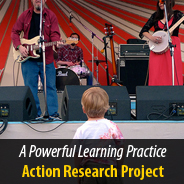
Prairie South School Division
Team Members: Patti Rodger, Toni New, Roger Morgan, Lana Nogue, Cori Saas, Shelley Wright, Dean Shareski
Community: Canadian Year 1, 2010-2011
The members are exploring levels of student engagement involving the use of Web 2.0 tools. Some of the questions we have are do the use of Web 2.0 tools increase student engagement, what are the factors that create the best climate for student engagement, and how do we best engage the students in our classroom, whether it’s face to face, or online learning? We created…
Working with the standards
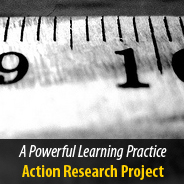
Our team attempted to align specific sections of the PA Academic Standards with the NETS and give examples and/or suggestions for how the use of technology and 21st century skills can be integrated with the learning of academic competencies. It is our hypothesis that the use of technology with standards-aligned learning activities will serve to increase student engagement,…
Last chance to join a Community
Powerful Learning Communities are about helping you understand how to create a culture of collaboration by becoming a community of learners. You’ll learn how to leverage collegial relationships to produce meaningful innovation in curriculum and other school activities. You’ll become part of a connected family of learners that connect and share, both online and face-to-face. It’s meaningful, global collaboration.
Our Communities close on August 15th!
Let us answer your questions. Chat live with us in a free, live info session.
Powerful Learning Communities are forming now. Sign up for an info session today, where you can chat with us live and learn about what’s in store for you if you join.
Latest posts by Powerful Learning Practice (see all)
- Hurry, you do not want to miss out on this… - November 3, 2020
- Resist the Urge to Quit Prematurely - October 26, 2020
- Let’s Move Past Feeling Disconnected from Your Students. Words Matter - October 24, 2020


Trackbacks/Pingbacks